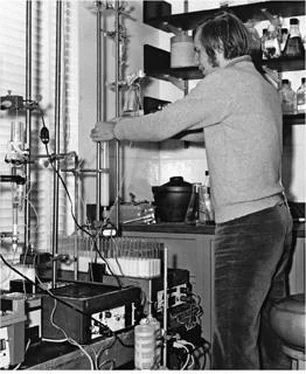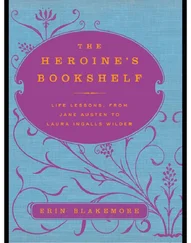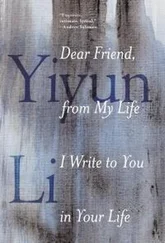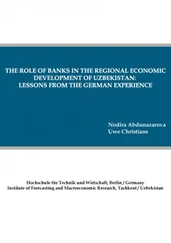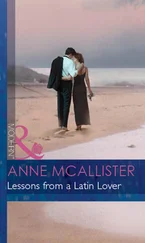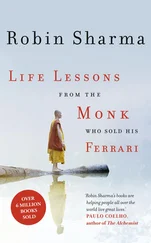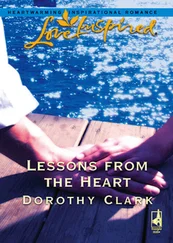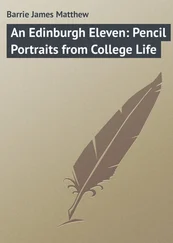James Watson - AVOID BORING PEOPLE - Lessons from a Life in Science
Здесь есть возможность читать онлайн «James Watson - AVOID BORING PEOPLE - Lessons from a Life in Science» весь текст электронной книги совершенно бесплатно (целиком полную версию без сокращений). В некоторых случаях можно слушать аудио, скачать через торрент в формате fb2 и присутствует краткое содержание. Жанр: Биографии и Мемуары. Описание произведения, (предисловие) а так же отзывы посетителей доступны на портале библиотеки ЛибКат.
- Название:AVOID BORING PEOPLE: Lessons from a Life in Science
- Автор:
- Жанр:
- Год:неизвестен
- ISBN:нет данных
- Рейтинг книги:5 / 5. Голосов: 1
-
Избранное:Добавить в избранное
- Отзывы:
-
Ваша оценка:
- 100
- 1
- 2
- 3
- 4
- 5
AVOID BORING PEOPLE: Lessons from a Life in Science: краткое содержание, описание и аннотация
Предлагаем к чтению аннотацию, описание, краткое содержание или предисловие (зависит от того, что написал сам автор книги «AVOID BORING PEOPLE: Lessons from a Life in Science»). Если вы не нашли необходимую информацию о книге — напишите в комментариях, мы постараемся отыскать её.
AVOID BORING PEOPLE: Lessons from a Life in Science — читать онлайн бесплатно полную книгу (весь текст) целиком
Ниже представлен текст книги, разбитый по страницам. Система сохранения места последней прочитанной страницы, позволяет с удобством читать онлайн бесплатно книгу «AVOID BORING PEOPLE: Lessons from a Life in Science», без необходимости каждый раз заново искать на чём Вы остановились. Поставьте закладку, и сможете в любой момент перейти на страницу, на которой закончили чтение.
Интервал:
Закладка:
After Harrie Massey left to lead the British uranium effort at Berkeley, the Cambridge mathematician Edward Collingwood became Francis's mentor. He saw Francis both as a friend and as an invaluable colleague, inviting him for weekends to his large Northumbrian home, Lilburn Tower, and taking him to Russia in early 1945 to help decipher the workings of a just-captured German acoustic torpedo.
After the war's end, Francis's new bosses did not need to be as forgiving of his loud, piercing laughter or of the distaste for conventional thinking that often inspired it. Though formally made a member of the civil service in mid-1946, Francis soon lost interest in military intelligence and wanted a bigger challenge. He saw in biology the greatest range of potential problems to engage his inquisitive mind.
Apprised of Francis's desire for a radical change of course, Harrie
Massey sent him to see the physicist Maurice Wilkins at King's College London, which had a new biophysics laboratory. After the war, while still in Berkeley, Massey had changed Wilkins's life by giving him a copy of Erwin Schrödinger's What Is Life? Its message that the secret of life lay in the gene was as compelling to Maurice as it had been to me, and he soon began to make his move into biophysics. He would join J. T. Randall at St. Andrews and then move with him to London. Immediately he and Francis became friends, with Maurice soon asking Randall to offer a job to Francis. Randall thought better of it, though, correctly seeing Francis as a mind he could not control. The Medical Research Council, mindful of Francis's high wartime repute, came to his rescue and funded his learning to work with cells at the Strangeways Laboratory on the outskirts of Cambridge.His task during the next two years at Strangeways—observing how tiny magnets moved through the cytoplasm of cells—did not win Francis any kudos. At best it was busywork that gave him time to seek out more appropriate challenges. These at last came when he moved his MRC scholarship across Cambridge to Max Perutz's protein crys-tallographic unit. Though his new job was no better paid, it would let him work toward the Ph.D., by then a prerequisite for meaningful academic positions.
By the time I came to Cambridge, Francis's forte was increasingly seen to be crystallographic theory, though his early forays in the field had not been universally appreciated. At his July 1950 first group seminar, entitled “The Theory of Protein Crystallography,” he came to the conclusion that the methodologies currently used by Perutz and Kendrew could never establish the three-dimensional structure of proteins—an admittedly impolitic assertion that caused Sir Lawrence Bragg to brand Crick a boat rocker. Much more harm came a year later when Bragg presented his newest brainchild and Francis told him how similar it was to one he himself had presented at a meeting six months earlier. After the infuriating implication of his being an idea snatcher, Sir Lawrence called Francis into his office to tell him that once his thesis was completed he would have no future at the Cavendish. Fortunately for me, and even more so for Francis, Cambridge was unlikely to grant him the degree for another eighteen to twenty-four months.
I was by then having lunch with Francis almost daily at a nearby pub, the Eagle, which during the war was favored by American airmen flying out of nearby airfields. Soon we would be upgraded from desks beside our lab benches to a largish office of our own next to the connected pair of smaller rooms used by Max and John. In this way, Francis's ever irrepressible laughter would less disturb the work habits of other unit members. At our first meeting, Francis had spoken of his much valued friend Maurice Wilkins, who, like him, had made a wartime marriage that soon disintegrated with peace. Because he was curious to know whether Maurice's crystallography had generated any new, perhaps sharper X-ray photos from DNA, Francis invited him for a Sunday dinner at the Green Door, the tiny apartment on top of a tobacconist's on Thompson Lane, across from St. John's College. Earlier occupied by Max Perutz and his wife, Gisela, it had been home to Francis and his second wife, Odile, since their marriage two years before, in August 1949.At that meal, we learned of an unexpected complication to Maurice's pursuit of DNA. While he was on an extended winter visit to the United States, his boss, J. T. Randall, had recruited to the King's DNA effort the Cambridge-trained physical chemist Rosalind Franklin. For the past four years in Paris she had been using X-rays to investigate the properties of carbon. Rosalind understood from Randall's description of her responsibilities that X-ray analysis of DNA was to be her responsibility solely. This effectively blocked Maurice's further X-ray pursuit of his crystalline DNA. Though not formally trained as a crys-tallographer, Maurice had already mastered many procedures and had much to offer. But Rosalind didn't want a collaborator; all she wanted from Maurice was the help of his research student Raymond Gosling. Now, though out in the cold for two months, Maurice could not stop thinking about DNA. He believed his past X-ray pattern arose not from single polynucleotide chains but from helical assemblies of either two or three intertwined chains bonded to each other in a fashion as yet to be determined. With the DNA ball sadly no longer under his control, Maurice suggested that if Francis and I wanted to learn more we should go to King's in a month's time to hear Rosalind give a talk on November 21.

Rosalind Franklin, while in Paris, serving afternoon coffee in evaporating dishes
Before it was time to go to London, Francis had reason to feel good about his place in the Cavendish. He and the clever crystallographer Bill Cochran derived easy-to-use mathematical equations for how helical molecules diffract X-rays. Each of them, in fact, did so independently within twenty-four hours of being shown by Bragg a manuscript from Vladimir Vand in Glasgow, whose equations they immediately saw as only half-baked. Theirs was an important achievement, for Francis and Bill had given the world the equations that could predict the diffraction patterns of specific helical molecules. The next spring I was to deploy them to show that the protein subunits of tobacco mosaic virus are helically arranged.
Suddenly, the best way to reveal DNA's 3-D structure was to build molecular models using Cochran and Crick's equations. Until a year previously this approach had made no sense since the nature of the covalent bonds linking nucleotides to each other in DNA chains was unknown. But after work by Alex Todd's nearby research group in the chemical laboratory at Cambridge, it was clear that DNA's nucleotides are held together by 3'-to-5’ phosphodiester bonds. A focus on model building was a way to set oneself apart from the alternative approach
of focusing on X-ray photograph details being pursued at King's College in London.On the day of the lecture, Francis was unable to go down to London and I went alone, still oblivious to the difference between the crystallographic terms “asymmetric unit” and “unit cell.” As a result, the next morning I mistakenly reported to Francis that Rosalind's DNA fibers contained very little water. My error only came to light a week later, when Rosalind and Maurice came up from London to look at a three-chain model that we had hastily constructed. It had DNA's sugar-phosphate backbone in the center with the bases facing outward. Upon seeing it, Rosalind immediately faulted its conception, saying the phosphate groups were located on the outside, not the inside of the molecule. Moreover, we had proposed DNA to be virtually dry whereas, in fact, it was highly hydrated. And we got the unmistakable impression that the King's group considered the pursuit of the DNA structure to be their property, not one to be shared with their fellow MRC unit in Cambridge. All too soon we learned that Sir Lawrence Bragg was of the same mind, when he told us to refrain from all subsequent DNA model-building activities. In stopping us Bragg was not motivated solely by a need to remain on good terms with another MRC-supported group. He wanted Francis to focus exclusively on research for his Ph.D. and be done with it.
Читать дальшеИнтервал:
Закладка:
Похожие книги на «AVOID BORING PEOPLE: Lessons from a Life in Science»
Представляем Вашему вниманию похожие книги на «AVOID BORING PEOPLE: Lessons from a Life in Science» списком для выбора. Мы отобрали схожую по названию и смыслу литературу в надежде предоставить читателям больше вариантов отыскать новые, интересные, ещё непрочитанные произведения.
Обсуждение, отзывы о книге «AVOID BORING PEOPLE: Lessons from a Life in Science» и просто собственные мнения читателей. Оставьте ваши комментарии, напишите, что Вы думаете о произведении, его смысле или главных героях. Укажите что конкретно понравилось, а что нет, и почему Вы так считаете.
